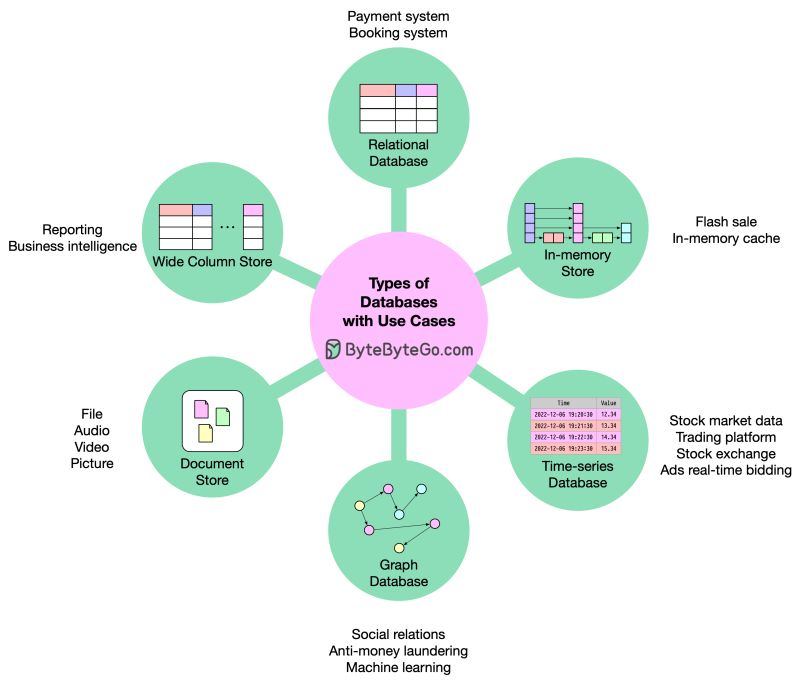Choosing the Right Database
When deciding which type of database to use, it can be overwhelming to choose from the many available options. Here’s a brief summary of some common database architectures and their use cases:
-
Relational databases: These are versatile and can solve almost any problem. They are suitable for structured data with well-defined relationships between entities.
-
In-memory stores: With their high speed and limited data size, in-memory databases are perfect for applications that require fast operations, such as caching or real-time analytics.
-
Time-series databases: Designed to store and manage time-stamped data, these databases are ideal for monitoring systems, IoT applications, and financial trading platforms.
-
Graph databases: If the data involves complex relationships between unstructured objects, graph databases could be a good option. They handle highly connected data, such as social networks or recommendation engines.
-
Document stores: These data stores are suitable for storing large, immutable data, such as user profiles, product catalogs, or content management systems with large amounts of audio and video content.
-
Wide column stores: Typically used for big data and analytics, wide column stores are great for semi-structured data. They are designed for high scalability and performance.
